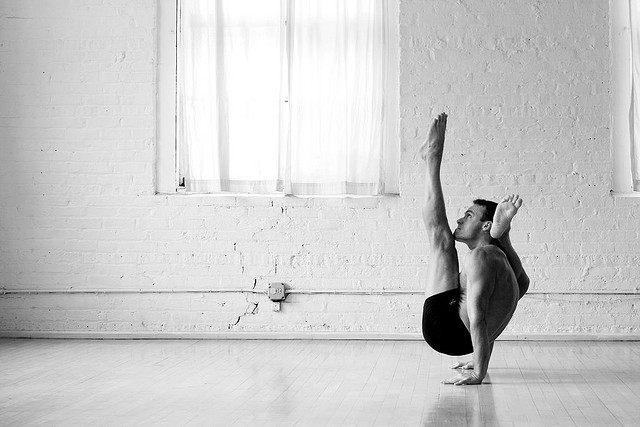Longtime PD readers will remember my somewhat reluctant decision to begin attending yoga classes. I was so wrapped up in the stigma of the stereotypes ascribed to yogis; I was afraid I’d be unfairly judged as someone who dressed in billowy skirts and wore prayer beads. There is nothing wrong with any of that, of course. It just wasn’t the way I wanted to be perceived (and really, what does it matter? Hindsight is 20/20, I suppose).
Even so, I began to build upon my practice and learned to value my time on the mat. The studio near my apartment taught basic vinyasa, which I enjoyed, but it wasn’t exactly something that felt sustainable for me since every class was different and varied in its difficulty.
A few months ago, I felt inspired to try a different style of yoga, one that I had only flirted with in high school. The Mysore Ashtanga Method of yoga is unique in that it asks students to complete the same series of postures at every practice. There are six series in Ashtanga, falling in beginner (primary), intermediate, and advanced levels. The Primary Series serves as the foundation for all later series. The late Sri K. Pattabhi Jois, sometimes referred to as the father of Ashtanga, emphasized that anyone–young, old, healthy, sick–can do the practice. Unlike other styles of yoga, which involve instruction and guidance throughout class by a teacher, Ashtanga allows students to work at their own pace, with a teacher present to assist with more challenging postures.
My first time practicing Ashtanga in a studio was unlike any other yoga class I’ve attended. Because there is no official start time to the practice, people can essentially come and go as they please, and everyone is at different stages and levels of the asanas. It sounds a little chaotic, but it’s actually incredibly grounding: the practice feels very personal, and yet there is also a quiet kinship among students in the room.
As a beginner, I am still in the process of learning the Primary Series. I won’t lie: the practice is physically and mentally challenging, requiring strength, flexibility, and an equanimous mind. In other yoga classes I’ve been to, students are told that they can skip or modify poses as needed, come into balasana, etc. In contrast, Ashtanga students are asked to complete every posture to the best of their ability, allowing increased flexibility or strength to come with time. As a naturally impatient person, this idea of slow progression is so important to understand.
In the Primary Series, poses can range from easy to challenging, depending upon your experience, strength, and flexibility. For example, as part of the seated postures, there is navasana (boat pose)–a true test of core strength but common in a regular vinyasa class. One of my favorite postures, known as supta kurmasana, is more challenging and requires hip flexibility and spaciousness in the pelvis. And finally, one of the most difficult postures in the series is marichyasana D, a deep bind that requires hip and shoulder flexibility.
Throughout the practice, students are asked to adhere to the following principles:
1. Breath
Students are asked to focus on the breath throughout the asanas, using the ujjayi breathing method which involves breathing with the mouth closed and generating an audible sound in the throat. Students use generally hold each posture for five breaths.
2. Bandhas
Throughout practice, students engage the bandhas, or internal body locks, which help facilitate a steady practice. There are three bandhas: Mūla Bandha (root lock at pelvic floor), Uḍḍīyāna Bandha (actively drawing in the lower abdomen), and Jālaṅdhara Bandha (lowering the chin and raising the sternum).
3. Drishtis
Drishtis can be described as a point of focus during asana. Drishtis are a fundamental part of the practice because they help students maintain a steady and calm mind, even while in challenging postures. There are nine dristis: eyebrows, navel, thumb, hands, feet, up, right side and left side.
I never thought I would be a committed yogi. The practice was always too slow, too abstract, not enough cardio, etc. But Ashtanga is different. When I’m practicing Ashtanga, there is nothing hiding my vulnerabilities, anger, dreams…and, perhaps that’s a good thing.
Have you tried Mysore Ashtanga?
Also on I Tried It: Stand Up Paddleboard Yoga
Also by Molly: Cherry Pecan Protein Muffins





